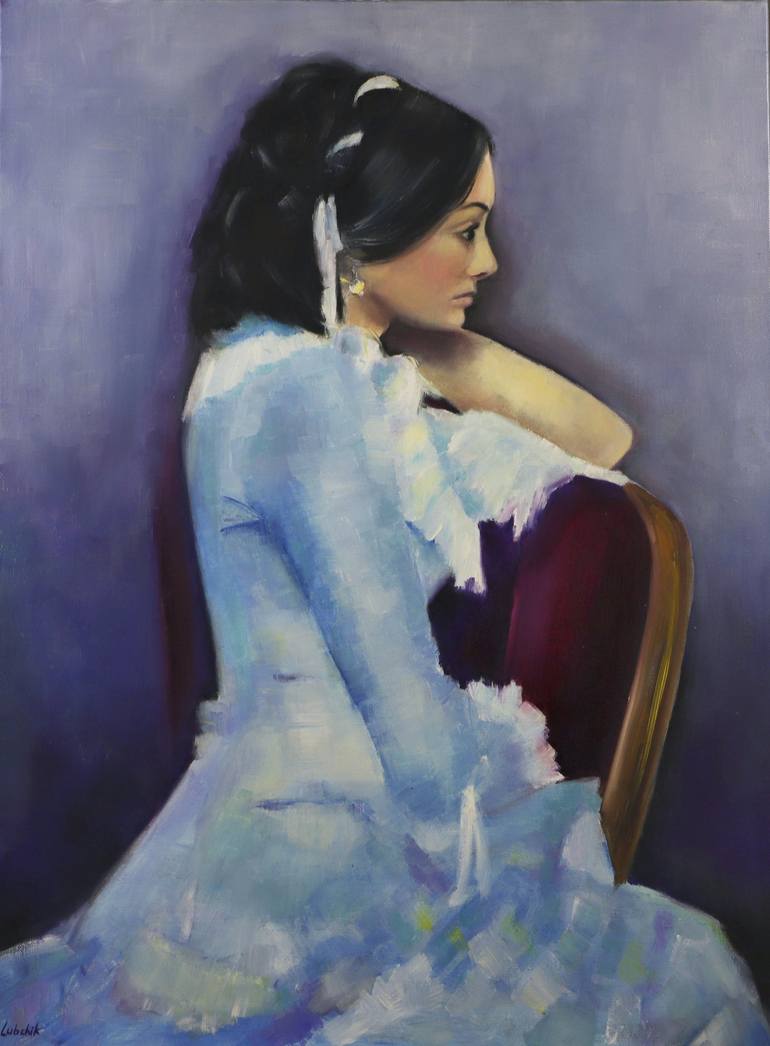Discovering the Depths of Emotion with Figurative Oil Painting Strategies
Discovering the Depths of Emotion with Figurative Oil Painting Strategies
Blog Article
The Role of Feeling and Expression in Figurative Oil Painting: A Thorough Analysis of Subject Matter and Make-up
The interplay of feeling and expression in figurative oil painting works as a crucial lens via which one can analyze the detailed relationship between subject and structure. Artists harness numerous strategies, from shade option to brushstroke characteristics, to cultivate psychological resonance within their jobs. This nuanced orchestration not only forms customer perception however also welcomes a deeper query right into how these aspects integrate to reflect the complexities of human experience. As we explore this abundant surface, one need to consider exactly how specific study light up the wider effects of these creative selections.
Understanding Emotion in Art
Feeling in art acts as an effective avenue for expression, permitting musicians to convey complicated sensations via their work. In figurative oil painting, this psychological deepness is frequently depicted via the depiction of the human number, recording the subtleties of human experience. The selection of topic, shade scheme, and brushwork all add to the psychological resonance of a piece.
Artists regularly draw upon personal experiences, societal issues, or global themes to evoke sensations in the visitor. A picture might mirror vulnerability, while a dynamic figure in movement can represent freedom or turmoil. These psychological threads connect the viewer to the art work, cultivating a dialogue that transcends the visual medium.
Additionally, the interplay between light and darkness can magnify psychological intensity, assisting the customer's stare and accentuating particular aspects within the structure. Making use of structure in oil painting even more includes layers of intricacy, inviting a tactile feedback that enhances the emotional experience. Overall, comprehending emotion in art is essential for appreciating the subtleties that define figurative oil painting, as it changes mere representation right into an extensive expedition of the human condition.
Trick Components of Composition
In the world of figurative oil painting, the composition acts as the underlying structure that organizes visual components and improves the psychological story. Essential parts of structure consist of balance, contrast, focal point, and rhythm, each adding to the overall impact of the artwork.
Balance describes the distribution of aesthetic weight within the painting, which can be accomplished with balanced or unbalanced plans. A well-balanced structure gives stability, allowing the visitor to engage with the item sympathetically - figurative oil painting. Comparison, on the various other hand, involves comparing various components, such as dark and light or cozy and cool colors, to direct the visitor's eye and evoke emotional feedbacks
The prime focus is crucial, as it routes interest to the most significant part of the paint, typically highlighting the emotional core of the narrative. Through methods like shade saturation or placement, musicians can highlight this area efficiently. Rhythm pertains to the repetition of elements, producing a sense of movement and circulation throughout the structure. By skillfully integrating these essential components, artists can craft mentally resonant and engaging figurative oil paints that mesmerize and involve their audience.
Topic and Its Impact
Subject plays a pivotal role in metaphorical oil paint, as it not just acts as the foundation for the narrative yet additionally shapes the viewer's interpretation and emotional involvement with the artwork. The option of topic-- be it a singular figure, a group dynamic, or a thematic representation-- directly affects the emotional atmosphere conveyed to the target market.

For example, pictures commonly stimulate individual connections, exposing the details of human expression and character, while scenes illustrating communal tasks can develop a sense of belonging or nostalgia. The cultural and historical context of the subject issue enhances the visitor's understanding, prompting deeper representations on social norms, worths, and the human problem.
Different topics likewise produce differing degrees of interaction; a remarkable problem depicted via numbers in tension might generate sensations of stress and anxiety or compassion, while calm landscapes can conjure up harmony and consideration. Eventually, the effect of subject issue in figurative oil painting is profound, as it functions as a channel for emotional vibration, directing the audience's reaction and analysis, and cultivating a link in between the art work and the viewer. This interaction is vital for the effective interaction of the musician's intent.
Strategies for Stimulating Sensations
The performance of figurative oil paint in communicating emotions is dramatically influenced by the techniques employed by the musician. Among the most crucial methods is using color theory, where the calculated selection of tones can stimulate particular emotional actions. Cozy colors, such as oranges and reds, often evoke feelings of enthusiasm or aggression, while cooler tones like blues and greens tend to evoke peace or despair.
One more essential technique is the manipulation click this site of light and darkness, called chiaroscuro. This technique enhances the three-dimensionality of numbers, creating remarkable contrasts that can magnify emotional depth. The positioning of light can direct viewers' feelings, highlighting specific components of the composition.
Brushwork additionally plays a crucial duty; loose, expressive strokes can share power and spontaneity, whereas smoother strategies could suggest tranquility or precision. Furthermore, the setup of subjects within the composition can influence psychological impact. Close proximity can suggest affection, while range may suggest isolation.
Ultimately, the combination of these methods enables musicians to craft narratives that reverberate with the visitor, transforming a plain visual experience into an evocative psychological journey. - figurative oil painting

Study of Remarkable Works
Analyzing remarkable jobs of figurative oil painting reveals exactly how different this page techniques are employed to evoke effective feelings. One excellent instance is Edvard Munch's "The Scream," where the distorted figure and swirling history communicate existential fear. Munch's use color-- vivid oranges and deep blues-- escalates the psychological effect, showcasing exactly how palette options can form visitor experience.
One more substantial work is Pablo Picasso's "Les Demoiselles d'Avignon." Right here, fragmented types and strong brushstrokes reflect a troubled emotional landscape, testing conventional representations of the women number. Picasso's ingenious composition not just records the audience's interest but likewise welcomes reflection on motifs of identity and sexuality.
Additionally, Frida Kahlo's "The Two Fridas" supplies a touching exploration of duality and self-identity. The contrasting numbers, connected by a common heart, exhibit Kahlo's emotional deepness and individual story. figurative oil painting. Her careful attention to detail and symbolic components serve to engage customers on a natural degree
These study underscore the profound link in between feeling and composition in figurative oil paint, revealing exactly how musicians harness technique to interact complicated sensations and narratives that reverberate throughout time and society.

Verdict
Finally, the interaction of emotion and expression in figurative oil painting substantially boosts the viewer's experience and analysis of the artwork. Through a cautious selection of subject matter and compositional techniques, musicians share profound stories that resonate on both global and personal levels. The application of color brushwork, theory, and chiaroscuro further amplifies psychological depth, transforming each canvas into a powerful reflection of the intricacies of the human experience.
In metaphorical oil paint, this emotional deepness is often portrayed through Website the representation of the human figure, capturing the subtleties of human experience.Additionally, the interaction between light and shadow can intensify emotional strength, directing the visitor's stare and attracting attention to specific elements within the make-up. The usage of appearance in oil paint further adds layers of complexity, inviting a tactile response that enhances the emotional experience.The focal point is vital, as it routes attention to the most considerable part of the paint, typically highlighting the emotional core of the story. Inevitably, the impact of subject issue in metaphorical oil paint is extensive, as it serves as an avenue for psychological resonance, guiding the customer's action and analysis, and cultivating a link in between the viewer and the art work.
Report this page